There’s a lot of groupthink in education.
It’s an obvious side effect of our nature as teachers. We’re team builders and supporters, nurturers and cooperators.
Those are all wonderful traits, but they also make us reluctant to press into new or unknown territory. We even give each other the stink eye when somebody in our department goes rogue on a writing assignment.
It’s like ambition and risk-taking are betrayals of some unwritten teacherly pact.

But risk-taking is important for our students.
The last few years, I’ve learned that not only does a little boundary pushing lead to better outcomes for students–it also helps the professionals coming up behind you to trust their instincts.
My first venture into unknown territory came a few years ago when I started to explore graphic novels for my lowest readers. It felt strange to give these pleasure readings to kids, in a medium that few other people (at least in my building or immediate professional group) were engaging with.
I kept second guessing myself. People would nod their heads when I explained my thinking, but nobody else jumped on board immediately, aside from the comfort-zone books that had already been accepted into the canon of “okay” English texts (think Maus and…well, that’s about it…).
I remember thinking constantly that at some point–if I kept on with this “weird” idea I was exploring–that someone was going to step out from behind a tree in this woods I’d wandered into, and tell me to get back on the path and stop taking risks that could impact students. Here’s what actually happened.
Nobody ever told me to quit exploring.
In fact, special education teachers in my building were incredibly supportive and started helping to spread the word. I also discovered quite quickly that I wasn’t the only one who was using graphic novels for high-interest pleasure reading. Several colleagues had multiple titles in their classroom libraries.
While I was utilizing them in different ways, it became evident quite quickly that my idea wasn’t as “out there” as I’d originally thought. Then something else became evident.
The Risky experiment started to work.
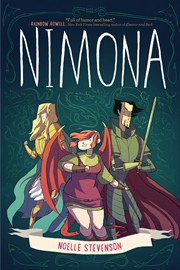
It was the great graphic novel experiment. And it worked.
I found titles that really resonated with kids–and I even blogged about the titles that were big hits.
What’s more, my school librarian (whom you might know from this very blog!) turned out to be way ahead of me in terms of graphic novels, and helped build up our media center’s collection while I worked on my classroom one!
Over time, students I’d had in previous years started returning to my room, looking for new titles–which also helped other teachers find titles that these struggling-but-eager readers would latch onto.
Then this year, when I attended NCTE’s big annual conference, I was elated to see multiple sessions explaining the effectiveness of graphic novels. The sessions even looked at the novels’ complexities–which actually rival many traditional classroom texts.
The topic blew up on Twitter for the next couple days, and suddenly there was a shift.
My graphic novel experiment was getting validation.
I wasn’t in the woods anymore. What I thought was a (pun intended) novel idea a few years ago, turned out to be the same idea lots and lots of teachers were having. It just took us a while to spot each other.
I probably would’ve listened to those two great presentations at the conference and started using graphic novels anyway. But I think about all the students I’ve had, students who never saw themselves as readers until the right graphic novels were in their hands.
And I’m glad that I took a professional risk, instead of waiting for someone else to tell me what good ideas the group had pre-approved of.
 Michael Ziegler (@ZigThinks) is a Content Area Leader and teacher at Novi High School. This is his 15th year in the classroom. He teaches 11th Grade English and IB Theory of Knowledge. He also coaches JV Girls Soccer and has spent time as a Creative Writing Club sponsor, Poetry Slam team coach, AdvancEd Chair, and Boys JV Soccer Coach. He did his undergraduate work at the University of Michigan, majoring in English, and earned his Masters in Administration from Michigan State University.
Michael Ziegler (@ZigThinks) is a Content Area Leader and teacher at Novi High School. This is his 15th year in the classroom. He teaches 11th Grade English and IB Theory of Knowledge. He also coaches JV Girls Soccer and has spent time as a Creative Writing Club sponsor, Poetry Slam team coach, AdvancEd Chair, and Boys JV Soccer Coach. He did his undergraduate work at the University of Michigan, majoring in English, and earned his Masters in Administration from Michigan State University.


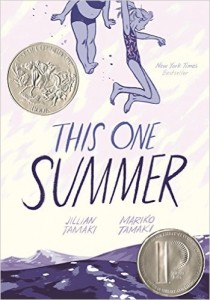 The Great Graphic Novel Experiment is in full swing in my classroom. In fact, it has become the focal point of my passions this year. I’ve been so vocal about it that my wife and kids actually bought me a couple graphic novels for my birthday. I’m “all in,” as Matt Damon says in the film Rounders.
The Great Graphic Novel Experiment is in full swing in my classroom. In fact, it has become the focal point of my passions this year. I’ve been so vocal about it that my wife and kids actually bought me a couple graphic novels for my birthday. I’m “all in,” as Matt Damon says in the film Rounders.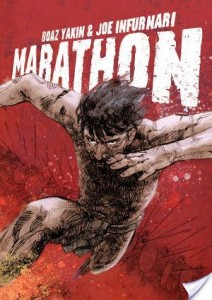 And what’s more, other research hints that such visual reading may also maximize a reader’s ability to retain information. That might not seem like a key merit for pleasure reading. But consider how many graphic novels have been written about historical events and culturally relevant topics: Marathon, about the Greek tale of that famous run; Templar, about what became of that famous secret society; and Americus, about censorship in literature. They’re all fiction, but still dense with contextual facts that the research suggests students will retain.
And what’s more, other research hints that such visual reading may also maximize a reader’s ability to retain information. That might not seem like a key merit for pleasure reading. But consider how many graphic novels have been written about historical events and culturally relevant topics: Marathon, about the Greek tale of that famous run; Templar, about what became of that famous secret society; and Americus, about censorship in literature. They’re all fiction, but still dense with contextual facts that the research suggests students will retain.
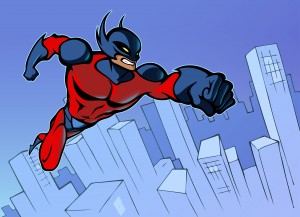 A real conversation, repeated yearly:
A real conversation, repeated yearly: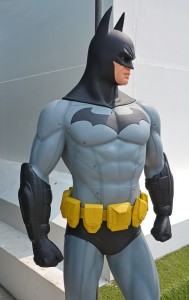 It was inspiring and tragic to watch him try to tackle a book that matched his interests, but which was simply beating him down in terms of comprehension. I wasn’t about to tell him to quit; he’d come too far for me to do that to him.
It was inspiring and tragic to watch him try to tackle a book that matched his interests, but which was simply beating him down in terms of comprehension. I wasn’t about to tell him to quit; he’d come too far for me to do that to him.